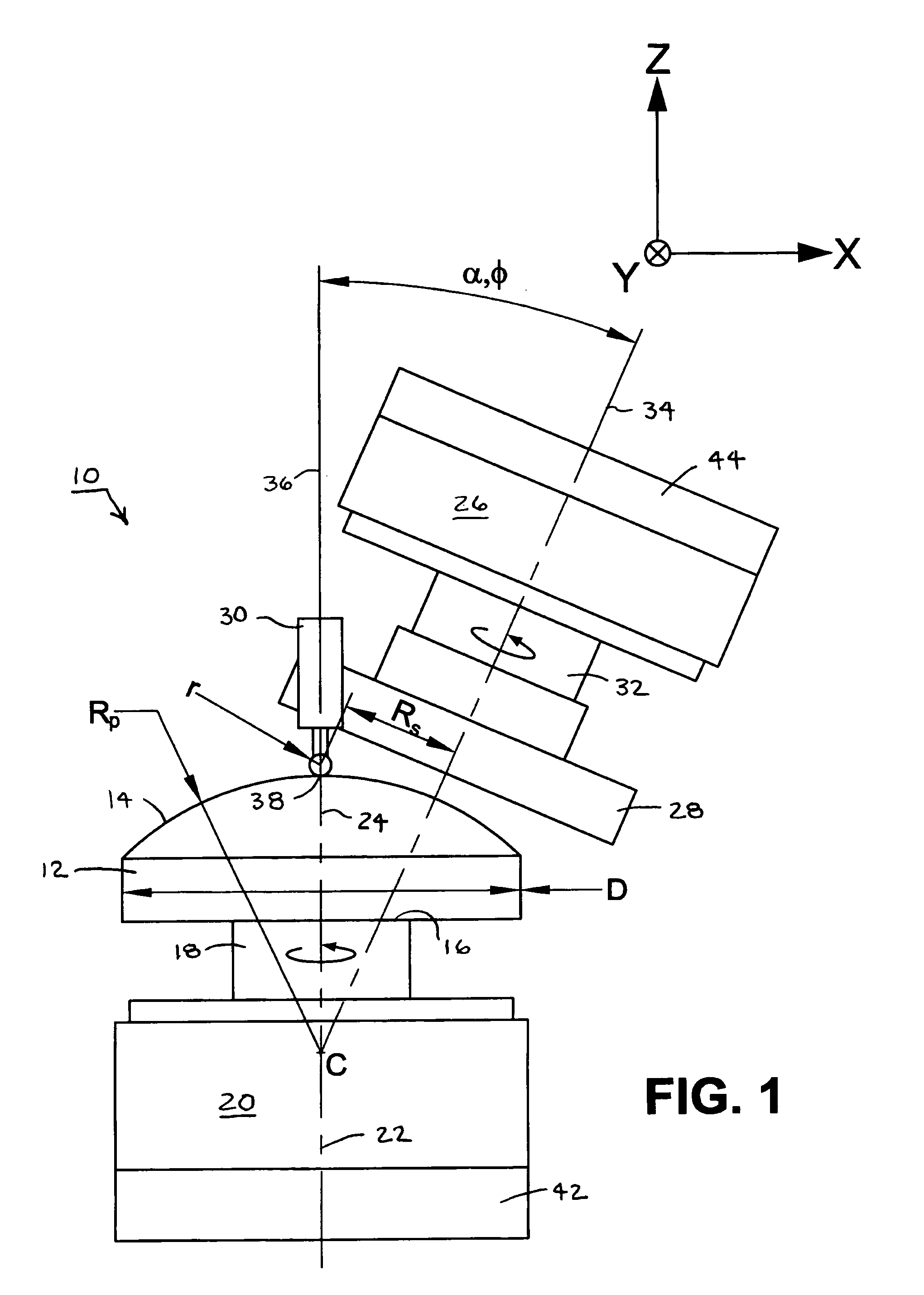Measurement of form of spherical and near-spherical optical surfaces
a technology of optical surfaces and spherical reference, applied in the field of metals, can solve the problems of inability to accurately produce two wavefronts, limited measurement of aspheric test surfaces using spherical reference and interrogating wavefronts, and mismatch between, etc., to achieve high accuracy, high repeatability, and high accuracy
- Summary
- Abstract
- Description
- Claims
- Application Information
AI Technical Summary
Benefits of technology
Problems solved by technology
Method used
Image
Examples
Embodiment Construction
[0029]An exemplary instrument 10 for practicing the invention is shown in the drawing figures in various configurations and operating modes for measuring a range of spherical and aspherical optical surfaces. In FIG. 1, an optical element 12 having a convex optical test surface 14 is mounted on a fixture 16 at one end of a work spindle 18. The work spindle 18 is a part of a rotary drive 20 for rotating the optical element 12 around a rotational axis 22. The optical test surface 14 is mounted so that its center of curvature C lies along the rotational axis 22 and its nominal axis of symmetry 24 is coincident with the rotational axis 22.
[0030]The fixture 16 mounting the test surface 14 is preferably a chuck such as a vacuum or mechanical chuck that permits of centration and angular orientation adjustments of the optical element 12 with respect to the rotational axis 22 of the work spindle 18. In addition, the optical element 12 is preferably rotatable within the fixture 16 to permit th...
PUM
 Login to View More
Login to View More Abstract
Description
Claims
Application Information
 Login to View More
Login to View More - R&D
- Intellectual Property
- Life Sciences
- Materials
- Tech Scout
- Unparalleled Data Quality
- Higher Quality Content
- 60% Fewer Hallucinations
Browse by: Latest US Patents, China's latest patents, Technical Efficacy Thesaurus, Application Domain, Technology Topic, Popular Technical Reports.
© 2025 PatSnap. All rights reserved.Legal|Privacy policy|Modern Slavery Act Transparency Statement|Sitemap|About US| Contact US: help@patsnap.com



